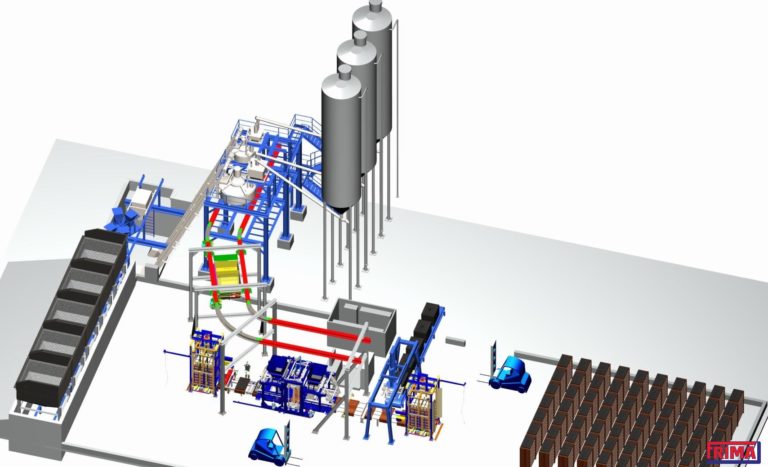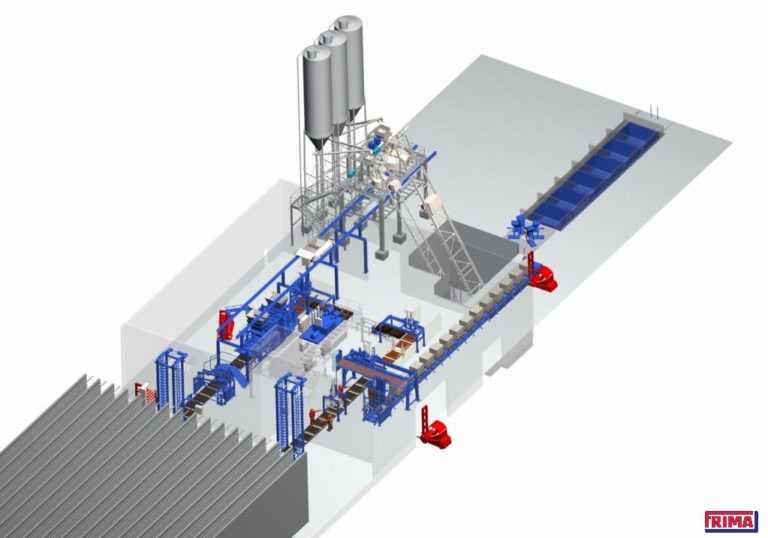System layouts for concrete block production
TAILOR-MADE FOR SURFACE AND NEEDS
FRIMA creates the system layout for concrete block production in close collaboration with the customers. We adapt the design to their unique production plans and surface conditions. We prioritize future-proofing and economic efficiency.
Most of the systems are designed in such a way that the material moves from the silo to the dosing and mixing system via transport systems. The concrete produced there then goes back to the block making machine. From there, the stones pass through the curing system to the packaging system.
Finishing systems for the design of the surfaces can be integrated on request.
In addition to the individual system layouts, FRIMA also offers economic I and U shapes with a small footprint.


